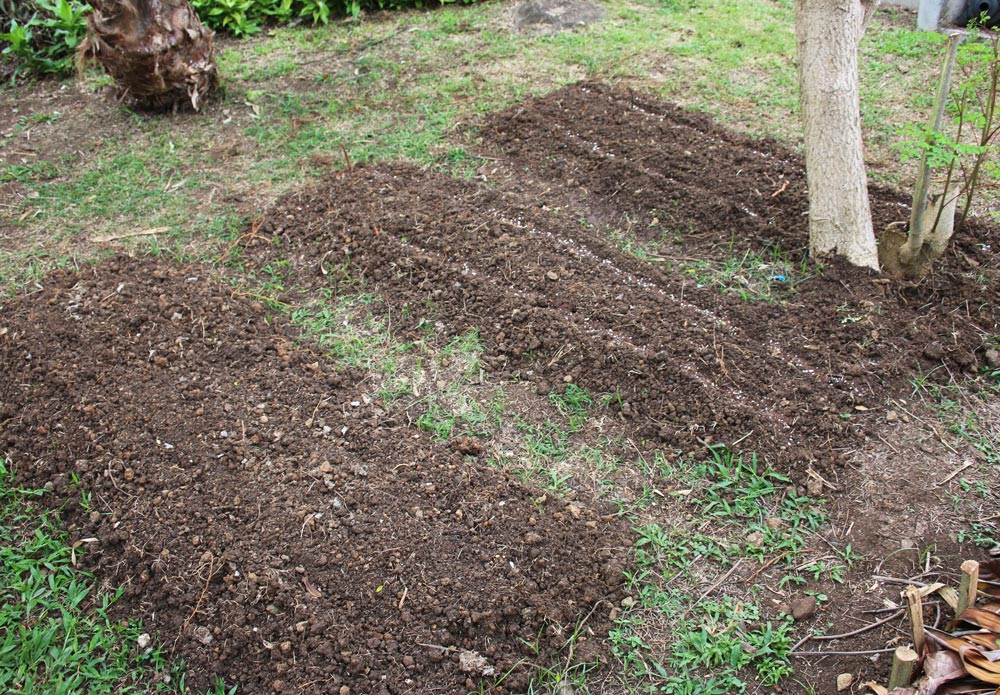Bobby asks about garden spacing and design:
Since 2012, I have tried many different methods and styles of home gardening, primarily in Northern Kentucky and Northeast Georgia. The most productive methods were found to be semi-intensive spacing in raised rows and raised beds. (One major rain storm showed me the benefits of raised rows over conventional flat rows.)As I am in my 60’s, I really like the idea of tall raised beds, but I cannot get my head around all of the additional ‘resources’ required for the intensive spacing typical of raised bed gardens. These ‘resources’ would include, but are not limited to, intensive watering (irrigation), intensive fertilizer, re-charging the soil, etc. In light of this, Steve Solomon’s idea of semi-intensive or extensive plant spacing makes more sense, especially when resources are scarce.
With that said, have you experimented doing semi-intensive or extensive spacing in raised beds?
Since I will be starting a new garden in Eastern Tennessee (zone 7a) in 2023, my thought was to do tall hard-sided raised beds for short growing veggies, raised rows for vertical vine plants (tomatoes, beans, peas, etc.), and soft-sided raised beds for horizontal vine plants (potatoes, sweet potatoes, melons, etc.). Any thoughts?
I agree with you, Bobby – the amount of effort and resources that go into producing vegetables in intensive beds isn’t worth it for me, especially since I have more space available. When you can plant a little farther apart, you use less water and get yields with less work. You may also get larger plants with more yield per plant.
I have switched almost all of my gardening to mounded beds, from my row gardens to my Grocery Row Gardens. If you want a few permanent raised beds for salads, have at it, but I usually grow those in the mounded beds too. In my fast-leaching sand, I like to grow lots of cover crops in between and mulch when I can, but at the very least I have done well with simple single rows 3′ apart, with no irrigation.
Those are tall enough to keep us from flooding out during heavy rain events. However, they do even better when I throw cut hay in between the rows. Just make sure it’s your own hay, and not Grazon-sprayed poisonous hay from a feed store.
As for your vining crops, you may get away with just planting them on smaller circular mounds. That’s how we usually grow our pumpkins. Sweet potatoes usually go into 4′ wide beds.
All the best,
David


3 comments
How do you till it at the end of the season. I am listening to your book Grow or Die right now and you are talking about a bunch of old school tools. Just curious which you would use to till under that patch of grass that you ran the chickens through.
Good question. If I have access to a tiller or tractor, I might till it all under with that.
Usually, though, I use a broadfork.
I’m also becoming a big fan of raised beds. We tilled with my big DR tiller 8 inches deep back and forth in different directions. Waited 2 weeks while more stuff popped up. Then i tilled it under too. Strung it and staked it for 4ft beds and 2ft walk rows. Sine then its just the wheel hoe, ½ moon hoes, and rake. First 2 monthe whenever we wheel hoe the walk paths. We take a good sharp flat shovel and scrape that soil into the raised beds. In Tennessee we get 48 plus inches of rsin that can be followed by weeks of dry skies. We actually had 1 bed of sweet corn get a big washout right down the middle the second week after germination. Now between the compost and roots as well as the added walkway material. The beds are better established while the soil us still friable.
Comments are closed.